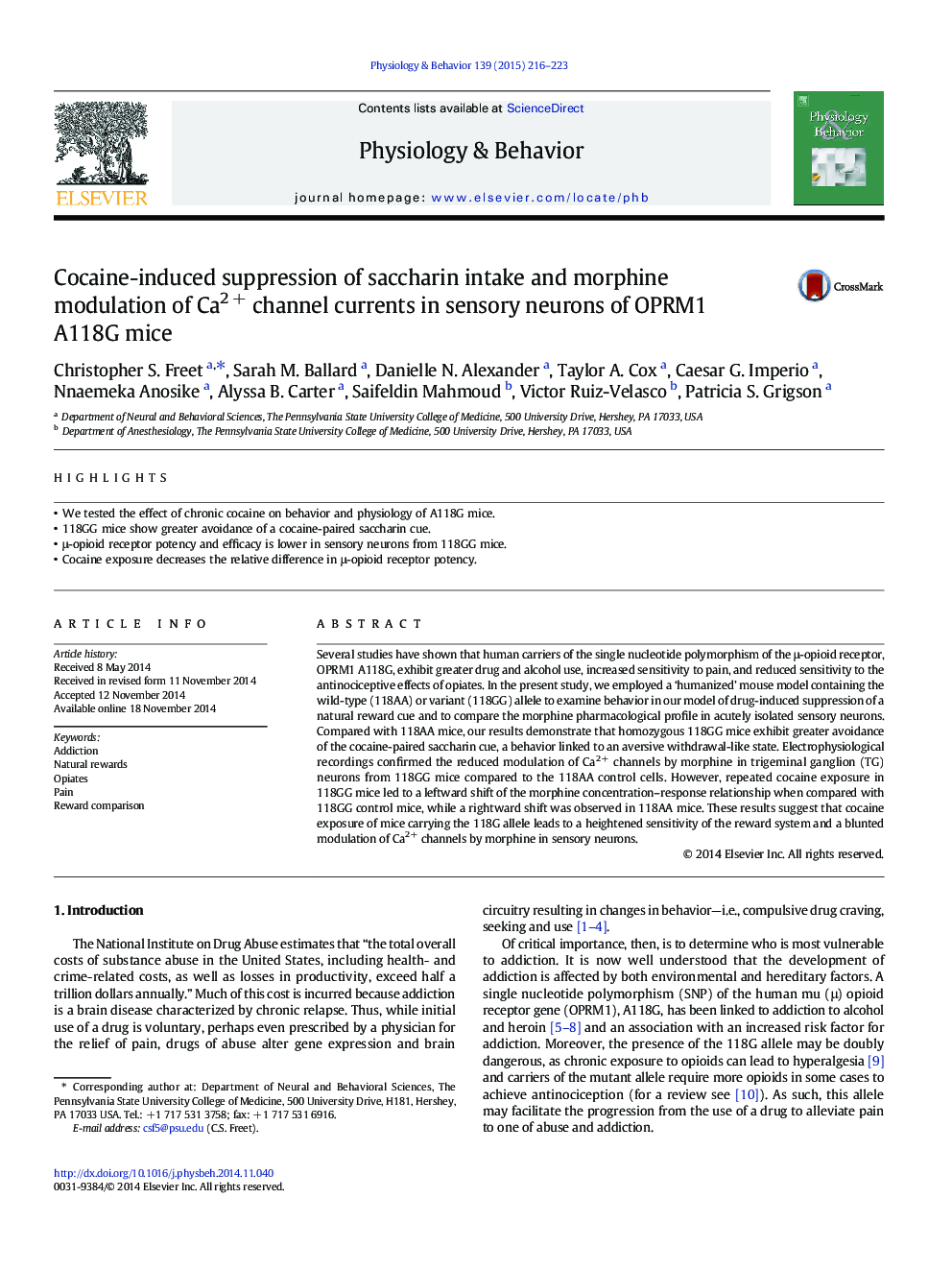| Article ID | Journal | Published Year | Pages | File Type |
|---|---|---|---|---|
| 5923927 | Physiology & Behavior | 2015 | 8 Pages |
Abstract
Several studies have shown that human carriers of the single nucleotide polymorphism of the μ-opioid receptor, OPRM1 A118G, exhibit greater drug and alcohol use, increased sensitivity to pain, and reduced sensitivity to the antinociceptive effects of opiates. In the present study, we employed a 'humanized' mouse model containing the wild-type (118AA) or variant (118GG) allele to examine behavior in our model of drug-induced suppression of a natural reward cue and to compare the morphine pharmacological profile in acutely isolated sensory neurons. Compared with 118AA mice, our results demonstrate that homozygous 118GG mice exhibit greater avoidance of the cocaine-paired saccharin cue, a behavior linked to an aversive withdrawal-like state. Electrophysiological recordings confirmed the reduced modulation of Ca2 + channels by morphine in trigeminal ganglion (TG) neurons from 118GG mice compared to the 118AA control cells. However, repeated cocaine exposure in 118GG mice led to a leftward shift of the morphine concentration-response relationship when compared with 118GG control mice, while a rightward shift was observed in 118AA mice. These results suggest that cocaine exposure of mice carrying the 118G allele leads to a heightened sensitivity of the reward system and a blunted modulation of Ca2 + channels by morphine in sensory neurons.
Related Topics
Life Sciences
Biochemistry, Genetics and Molecular Biology
Physiology
Authors
Christopher S. Freet, Sarah M. Ballard, Danielle N. Alexander, Taylor A. Cox, Caesar G. Imperio, Nnaemeka Anosike, Alyssa B. Carter, Saifeldin Mahmoud, Victor Ruiz-Velasco, Patricia S. Grigson,
